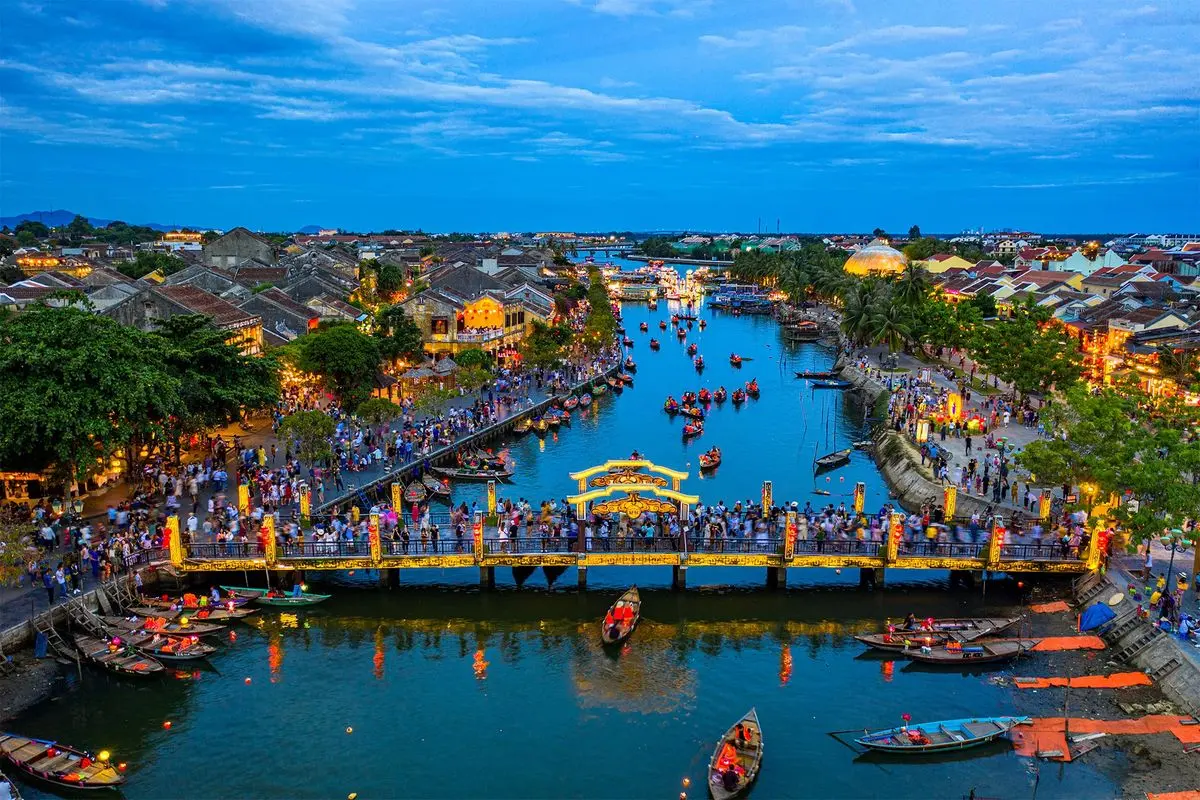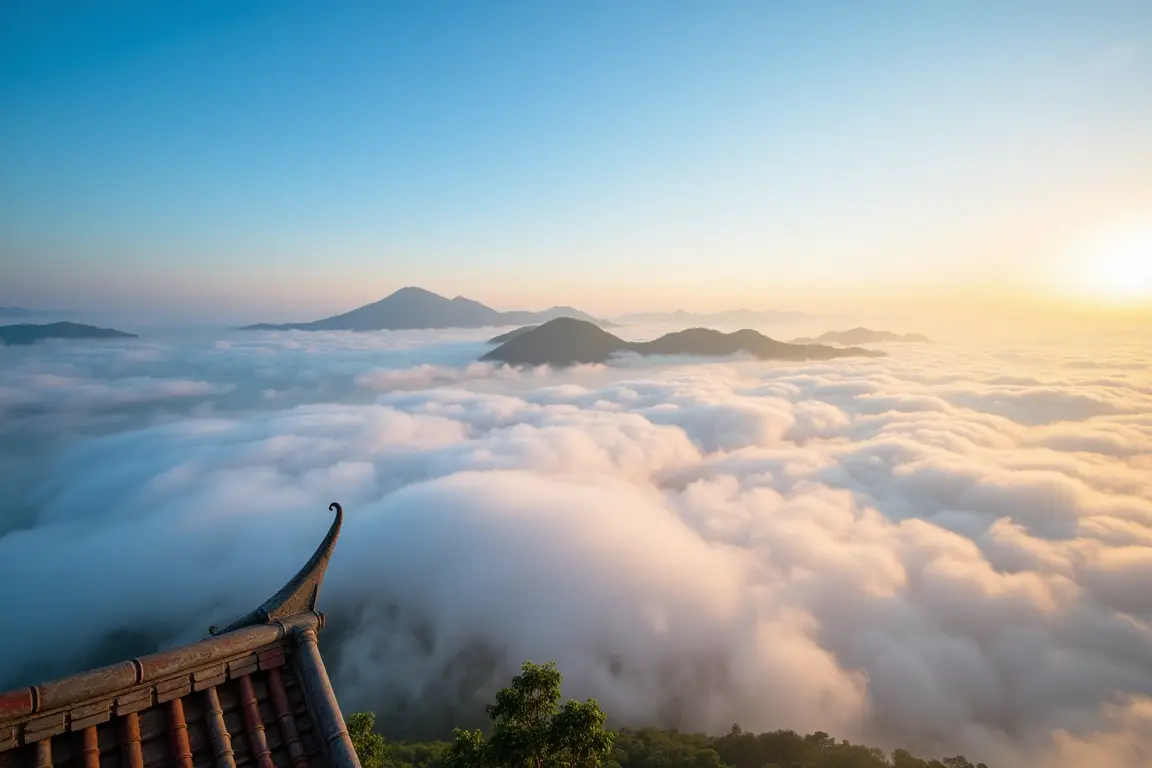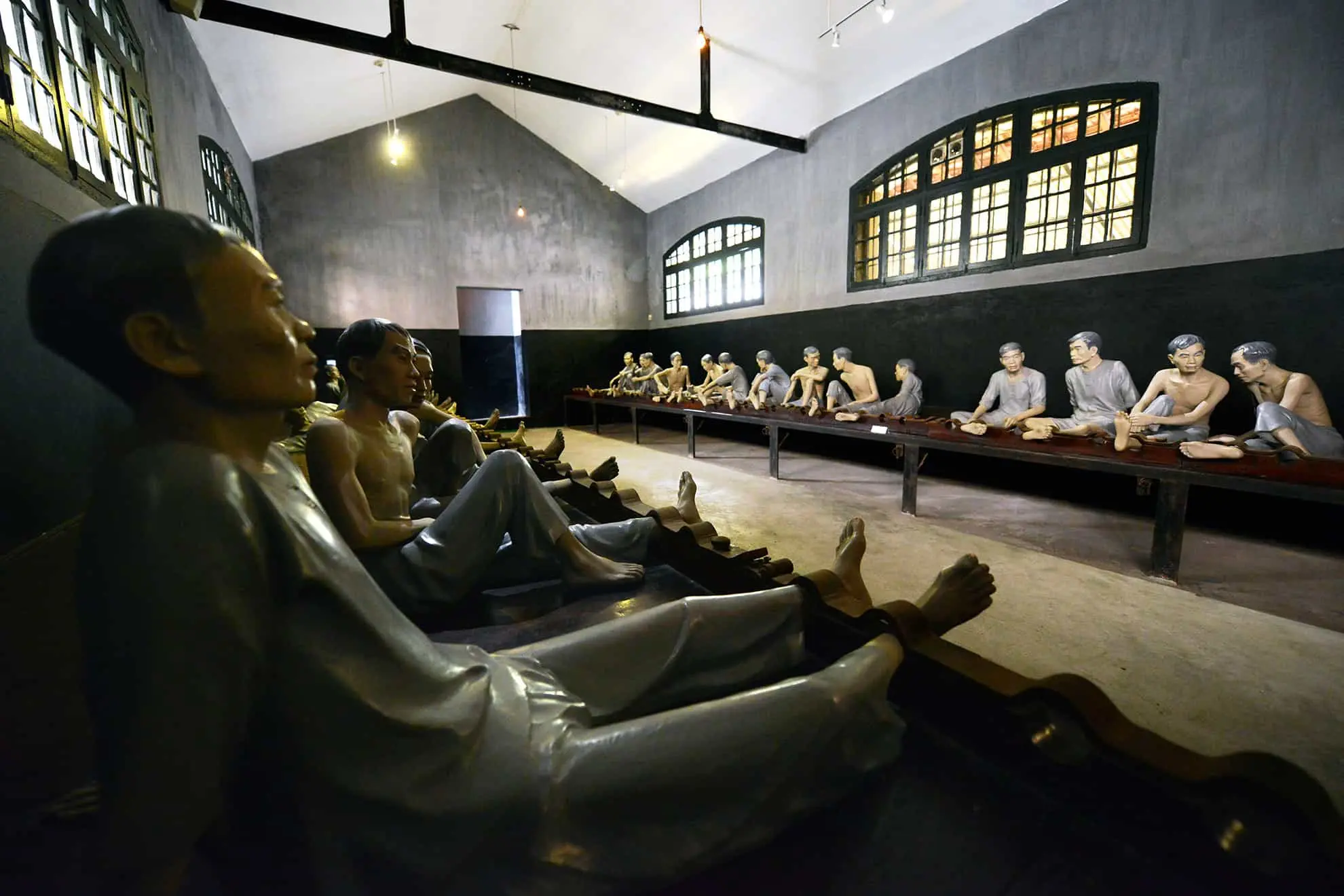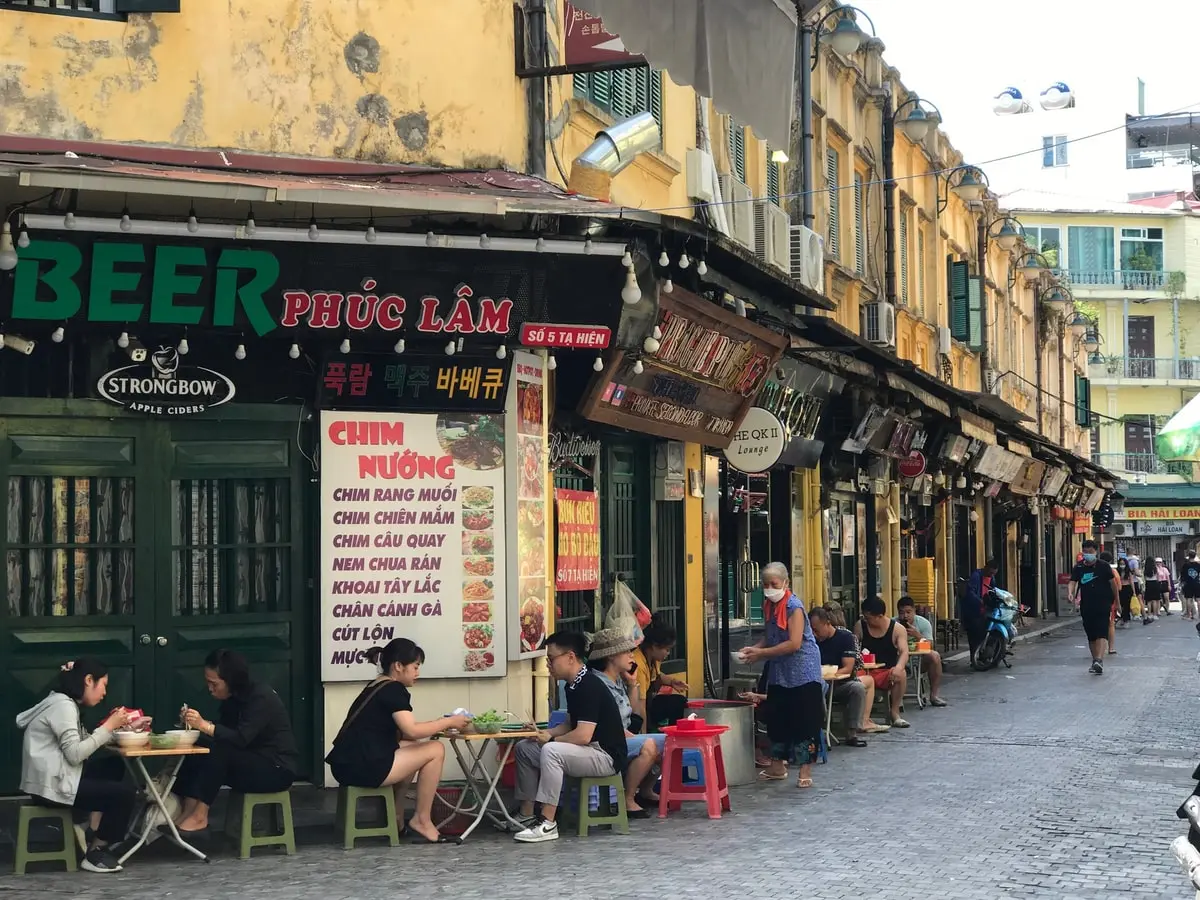Central Vietnam offers a unique journey through the heart of the nation. This region stretches along a narrow Coastal Strip, positioned between North Vietnam and South Vietnam. It is a land of contrasts, holding ancient history alongside modern development. EssentialVietNamtravel provides this guide to help you navigate its wonders. Understanding Central Vietnam means exploring vibrant cities, serene beaches, rich Cultural heritage, and acknowledging its specific Climate.
This area is a key part of Vietnam, situated on the Indochinese Peninsula within Southeast Asia and contributing to the broader tapestry of Asia and the World. From the bustling streets of Da Nang to the imperial past of Hue and the charming lanes of Hoi An Ancient Town, this guide covers the essential destinations. We will explore the practical aspects of Central Vietnam travel, including navigating the weather patterns, understanding the local cuisine, and venturing beyond the main tourist hubs. EssentialVietNamtravel aims to give you clear, factual information for a memorable trip. This guide helps you Find travel information effectively.
Your Guide to Central Vietnam Travel: Exploring Da Nang, Hue, Hoi An, and Stunning Beaches

Planning a trip to Central Vietnam involves choosing between its major highlights. Da Nang, Hue, and Hoi An represent the core destinations for many visitors, each offering distinct experiences. Complementing these cities are the numerous Beaches that line the region’s extensive Coastline Length, facing the East Sea.
Da Nang stands out as a Major City known for its modernity and coastal appeal. Often considered Vietnam’s Most livable city, it serves as a primary gateway with its international airport. A significant Feature of Da Nang is the iconic Golden Bridge, held aloft by giant stone hands at the Ba Na Hills resort complex. Accessing Ba Na Hills requires a cable car journey, offering panoramic views. Within the city itself, Marble Mountains are a cluster of five limestone and marble hills, each named after one of the five elements.
These mountains house caves, tunnels, and Buddhist sanctuaries. My Khe Beach is one of Da Nang’s most popular stretches of sand, known for its gentle slope and clear water. Numerous Hotels in Da Nang Central Vietnam cater to various budgets, from luxury resorts lining the shore to more affordable options downtown. Da Nang offers a blend of natural beauty and urban convenience, making it a popular base for exploring the region. Vietnam tourism heavily features Da Nang.
Moving north from Da Nang brings you to Hue. This city served as the Hue ancient capital of Vietnam under the Nguyen Dynasty. Its most prominent Feature is the Hue Imperial City, a vast complex of palaces, temples, gates, and walls enclosed within a citadel. This entire area is recognized as the Hue Monuments Complex, a World Heritage Site. Exploring the Imperial City requires time; plan for at least half a day to walk through its grounds and appreciate the architecture.
The Perfume River flows through Hue, and boat trips are a popular way to see the city and visit sites like the Thien Mu Pagoda. Hue offers a glimpse into the History of Vietnam’s imperial past. Its atmosphere is generally quieter compared to Da Nang. Understanding the layout and significance of the sites enhances the visit.
South of Da Nang lies Hoi An. Famous for its well-preserved Hoi An Ancient Town, another World Heritage Site, this location transports visitors back in time. The town’s architecture reflects a mix of indigenous and foreign influences (Chinese, Japanese, European) from its past as a major trading port. Walking through the pedestrian-friendly streets, especially in the evening when colourful lanterns illuminate the area, is a highlight. Key sights include the Japanese Covered Bridge, old merchant houses, and assembly halls.
Hoi An is also renowned for its tailors, who can create custom clothing quickly. An Bang Beach is a short bicycle or taxi ride from the town center, offering a relaxed seaside experience. The unique charm of Hoi An makes it an essential stop on any Central Vietnam travel itinerary.
The Beaches are a major draw throughout Central Vietnam. Beyond My Khe and An Bang, the Long beautiful coastline offers countless other spots. Lang Co Beach, located on the scenic Hai Van Pass route between Da Nang and Hue, provides stunning views. Further south, near Quy Nhon and Nha Trang (technically South Central Coast but often included in broader Central Vietnam trips), you find more coastal destinations. These Central Vietnam beach destinations provide opportunities for relaxation, swimming, and water sports. Planning involves deciding which city serves best as a base or designing an itinerary that includes stays in multiple locations.
Planning Your Trip: Understanding Central Vietnam’s Weather and Seasonal Considerations (Including Typhoons)

Understanding the weather is crucial when planning travel to Central Vietnam. The region experiences a Tropical Monsoon Climate, significantly different from the patterns in North Vietnam or South Vietnam. This Climate dictates distinct wet and dry seasons, and importantly, includes a period prone to significant Natural Hazards like Typhoons and Flooding. Awareness of these conditions helps in choosing the best time to visit and preparing appropriately. EssentialVietNamtravel emphasizes checking forecasts before and during your trip.
The dry season generally runs from January/February to July/August. During these months, temperatures are warm to hot, humidity builds, and rainfall is less frequent. This period is often considered the most favorable for tourism, particularly for visiting Beaches and engaging in outdoor activities. Sunshine is abundant, making exploration of cities like Da Nang, Hue, and Hoi An pleasant, although midday heat can be intense. Pack light clothing, sunscreen, and a hat. This is the peak season, so expect larger crowds and potentially higher prices for accommodation.
The wet season, or Central Vietnam rainy season weather, typically occurs from September to December. This period sees a marked increase in rainfall, often characterized by heavy downpours. Humidity remains high. While travel is still possible, outdoor plans may be disrupted. Flooding can occur, especially in lower-lying areas like parts of Hoi An Ancient Town and areas around the Perfume River in Hue. This season coincides with the typhoon season in the western Pacific.
Central Vietnam is directly Affected by Typhoons originating from the East Sea. These storms bring torrential rain, strong winds, and potential for significant Flooding and damage. Typhoon Noru is an example of a powerful storm that has impacted the region. This region is known as the Most disaster-prone region in Vietnam due to its Geographical location facing the sea.
Therefore, if planning travel between September and December, constant monitoring of weather forecasts is essential. Look for news updates regarding storm warnings. While Typhoons are not constant, the risk is highest during these months. Travel during this time requires flexibility and contingency plans. Some travelers prefer the shoulder seasons (like April-May or September) which can offer a balance between favorable weather and fewer crowds, though the risk of rain increases in September.
Climate change may also be influencing the intensity and frequency of these weather events. Always have travel insurance that covers weather-related disruptions. Acknowledging that the region Experiences frequent storms is part of responsible travel planning. Learning about the weather is a primary search intent for potential visitors.
Packing advice varies by season. Dry season requires light, breathable clothing, swimwear, sun protection. Wet season necessitates a good raincoat or umbrella, waterproof footwear, and potentially warmer layers for cooler evenings after rain. Regardless of season, comfortable walking shoes are essential for exploring historical sites. Understanding the potential for Natural disasters means being prepared, knowing evacuation routes if necessary, and following instructions from local authorities during severe weather events.
Uncovering Cultural Heritage: Journeys Through Hue Imperial City, Hoi An Ancient Town, and Historical Sites

Central Vietnam serves as a vital repository of Vietnamese culture and history. Its Geographical location has made it a crossroads for centuries, resulting in a rich tapestry of influences and significant historical landmarks. Exploring this Cultural heritage offers deep insights into the nation’s past. Key sites like the Hue Imperial City, Hoi An Ancient Town, and My Son Sanctuary are essential stops. These locations are not just tourist attractions; they are windows into the History of Vietnam and the civilizations that flourished here, including the Champa Kingdom.
The Hue Imperial City stands as a testament to Vietnam’s last imperial dynasty, the Nguyen Dynasty. Located within a fortified citadel in the Major City of Hue, this vast complex was the political, cultural, and religious center of Vietnam for over a century. Entering through the Ngo Mon Gate, visitors step into a world of palaces, temples, courtyards, and residences. The Forbidden Purple City, once the exclusive domain of the emperor and his concubines, lies at the heart of the complex, though much of it was damaged during conflicts.
Exploring the Thai Hoa Palace (Palace of Supreme Harmony), various temples, and royal living quarters reveals the grandeur and protocols of imperial life. This Hue ancient capital complex is recognized as the Hue Monuments Complex, a World Heritage Site. A visit here helps Understand culture history. Walking its grounds, perhaps wearing a traditional conical hat for sun protection (a symbol associated with Vietnam), allows for reflection on the country’s feudal past.
Hoi An Ancient Town offers a different, yet equally compelling, historical narrative. This World Heritage Site showcases a remarkably preserved Southeast Asian trading port dating from the 15th to the 19th century. Its architecture is a unique blend, reflecting the presence of merchants from China, Japan, and Europe alongside local Vietnamese styles. Walking the narrow streets reveals Japanese merchant houses, Chinese temples, and ancient tea warehouses.
The iconic Japanese Covered Bridge is a highlight, built by the Japanese community in the early 17th century. The town’s layout and buildings provide tangible evidence of cultural fusion and maritime trade history. Many structures are open to visitors, offering glimpses into the lives of merchants centuries ago. The preservation efforts in Hoi An are notable, maintaining the town’s atmosphere and historical integrity.
Further inland, nestled in a valley in Quang Nam Province, lies the My Son Sanctuary. This World Heritage Site comprises a collection of abandoned and partially ruined Hindu temples constructed between the 4th and 14th centuries by the kings of Champa. The Champa Kingdom controlled this part of Vietnam for a millennium, and My Son was their most important religious and political capital.
The temples, dedicated primarily to the Hindu god Shiva, showcase intricate stone carvings and unique brick-building techniques characteristic of Cham culture. Although damaged by time and war, My Son remains an evocative site, highlighting the distinct Cham culture that predates the arrival of the Vietnamese in the region. Visiting My Son provides crucial context to the diverse History of Vietnam beyond the narratives centered solely on the Vietnamese people.
Beyond these major sites, Central Vietnam’s Cultural heritage is woven into its landscapes and traditions. The Ho Chi Minh Trail, parts of which traversed the mountainous Inland region and Central Highlands bordering Laos, played a critical role in modern history. Remnants and museums related to the war provide another layer of historical understanding. The distinct regional accent and the resilient People character also form part of the intangible cultural identity. These sites offer more than sightseeing; they provide foundational knowledge about Vietnamese culture and the nation’s complex past.
A Taste of Central Vietnam Cuisine: Signature Dishes and Regional Flavors

Central Vietnam cuisine holds a distinct place within the broader landscape of Vietnamese food. Known for its complexity, refined presentation often influenced by former royal culinary traditions, and a characteristic Cuisine Style: Spicy, it offers a unique gastronomic experience. Exploring the food is as essential as visiting the historical sites. Many Central Vietnam delicious specialties are specific to this region, shaped by its geography, climate, and history. Trying the local dishes provides direct insight into the culture. EssentialVietNamtravel encourages visitors to be adventurous and sample widely.
One defining characteristic is the prominent use of chili peppers. Food is often spicy compared to the generally milder flavors of North Vietnam or the sweeter profiles found in South Vietnam. This preference for heat is deeply ingrained in the local palate. Dishes often feature a balance of spicy, sour, salty, and sweet flavors, creating intricate taste profiles. Fermented shrimp paste (mam ruoc) is also a common ingredient, adding a pungent umami depth to many dishes, particularly soups and dipping sauces.
Hue, as the former Hue ancient capital, boasts a particularly refined culinary tradition known as “royal cuisine.” These dishes were once prepared for the emperors and involved meticulous preparation, elaborate presentation, and high-quality ingredients. While true royal banquets are specialty experiences, the influence is seen in everyday Hue cooking through smaller portion sizes, attention to detail, and a wide variety of dishes served in a single meal.
Bun Bo Hue is perhaps Hue’s most famous export – a rich, spicy beef noodle soup with lemongrass, pork, and cubes of congealed pig’s blood. It’s a complex and satisfying dish found throughout Vietnam but arguably best experienced in its city of origin. Other Hue specialties include various types of small savory rice cakes like Banh Beo, Banh Nam, and Banh Loc, often served as appetizers or snacks.
Hoi An offers its own unique culinary stars. Cao Lau is a must-try noodle dish found almost exclusively in Hoi An. Its uniqueness is attributed to the water used to make the noodles, supposedly drawn from a specific local well (the Ba Le well), and the ash used to soak them, reportedly from trees on the nearby Cham Islands. The dish features thick, chewy noodles, slices of pork, fresh greens, crispy croutons, and a small amount of flavorful broth.
Mi Quang is another popular noodle dish associated with Quang Nam Province (where Hoi An is located). It features wide rice noodles, shrimp, pork, quail eggs, peanuts, and turmeric-infused broth, served with fresh herbs and rice crackers. Banh Xeo, a crispy savory pancake made from rice flour, turmeric, shrimp, pork, and bean sprouts, is popular throughout Vietnam but particularly well-loved in the central region, often served with a specific peanut-based dipping sauce.
Finding these Central Vietnam delicious specialties is easy. Street food stalls, local markets, and simple family-run eateries are often the best places to experience authentic flavors. Don’t hesitate to try food from vendors – it’s a core part of the culinary culture. Many restaurants also offer curated menus showcasing regional highlights. When you Find specialty cuisine information, look for places popular with locals. Exploring the food scene is a direct way to connect with the local Culture and Society. Remember the tendency for Spicy cuisine and inform vendors if you prefer less heat, although experiencing the intended flavor balance is recommended.
Beyond the Main Cities: Discovering Phong Nha Ke Bang National Park and the Scenic Coastline

While Da Nang, Hue, and Hoi An are cornerstones of Central Vietnam travel, the region offers much more beyond these urban centers. Venturing further afield reveals dramatic natural landscapes, particularly the stunning karst formations of Phong Nha Ke Bang National Park and the extensive, scenic Coastline. Exploring these areas provides a different perspective on the Geography of Vietnam and its natural Environment.
Phong Nha Ke Bang National Park, located in Quang Binh Province towards the northern part of Central Vietnam, is a UNESCO World Heritage Site celebrated for its immense limestone karst landscape. This area contains some of the oldest karst formations in Asia, dating back hundreds of millions of years. The park is riddled with hundreds of cave systems, underground rivers, and spectacular geological features. It gained international fame for housing Son Doong Cave, currently recognized as the World largest cave.
Access to Son Doong Cave is strictly controlled and requires expensive, multi-day expeditions. However, many other magnificent caves are accessible to regular visitors. Phong Nha Cave, after which the park is named, is reached by boat along the Son River. Paradise Cave (Thien Duong Cave) boasts truly breathtaking stalactite and stalagmite formations within a vast cavern. Dark Cave (Hang Toi) offers more adventurous experiences like ziplining, kayaking, and mud bathing inside the cave. Exploring Phong Nha-Ke Bang provides an appreciation for the raw natural beauty of this part of the Indochinese Peninsula and is a highlight for nature lovers and adventure seekers. The park also borders Laos to the west.
The Coastline of Central Vietnam is another significant draw. Stretching for hundreds of kilometers along the East Sea, this Long beautiful coastline is more than just the popular beaches near the main cities. Driving along coastal routes, particularly the Hai Van Pass between Da Nang and Hue, offers breathtaking vistas of mountains meeting the sea. This Coastal Strip features numerous fishing villages, quiet bays, and less-developed beaches offering tranquil escapes.
Exploring areas south of Hoi An towards Quy Nhon or north of Hue towards Dong Hoi reveals different coastal landscapes and local life. These areas are less frequented by international tourists compared to the main hubs, offering a more local experience. The coastal region plays a vital role in the local Economy, primarily through fishing and increasingly, Tourism. The presence of SE Asia largest lagoon system, the Tam Giang-Cau Hai Lagoon near Hue, offers unique ecosystems and opportunities for boat trips exploring traditional fishing practices.
Venturing into the Inland region and Central Highlands also presents opportunities, though accessibility can sometimes be more challenging. These areas offer different scenery, ethnic minority cultures, and historical sites related to the Ho Chi Minh Trail. However, the primary “beyond the cities” attractions for most visitors remain the national parks like Phong Nha-Ke Bang and the diverse experiences along the coast. Planning excursions requires considering transportation – renting a motorbike (with appropriate licenses and experience), hiring a car with a driver, or joining organized tours are common options. These explorations highlight the diverse Geography of Vietnam and the environmental importance of regions like Phong Nha-Ke Bang.
Read More: Essential Vietnam Travel Guides
Essential Travel Information: Transportation Options and Awareness of Natural Disasters

Successfully navigating Central Vietnam involves understanding practical travel details, including transportation options and crucial awareness of potential Natural Disasters. EssentialVietNamtravel provides this information to ensure a smoother and safer journey. Being prepared allows you to focus on enjoying the rich Culture, history, and landscapes.
Getting to Central Vietnam is straightforward. Da Nang International Airport (DAD) is the main gateway, receiving numerous domestic flights from Hanoi and Ho Chi Minh City, as well as international flights from various cities in Asia.
Find the Best Flights to Central Vietnam
Ready to start your adventure? Use these trusted platforms to compare prices and find the cheapest flights to Da Nang (DAD) from your location.
Hue (Phu Bai Airport – HUI) and Dong Hoi (VDH – for accessing Phong Nha) also have domestic airports. Train travel is another popular option. The Reunification Express train runs along the coast, connecting major cities.
Traveling by train offers scenic views, particularly along the Hai Van Pass section, although it is slower than flying. Sleeper berths are available for longer journeys. Buses are the most budget-friendly option, with numerous companies operating routes between cities and towns throughout Central Vietnam. Bus travel can range from comfortable sleeper buses to more basic local services.
Getting around within the region depends on distance and preference. Taxis and ride-sharing services like Grab are widely available in Da Nang, Hue, and Hoi An. For shorter distances within cities or towns like Hoi An, renting a bicycle is a popular and enjoyable choice.
Renting a motorbike provides the most flexibility for independent exploration but requires a valid international driving permit (IDP) recognized in Vietnam, along with experience navigating local traffic, which can be chaotic. Always wear a helmet. For longer distances between cities like Da Nang and Hue, options include train, bus, or hiring a private car with a driver, which offers comfort and the possibility of stopping at scenic points like the Hai Van Pass.
Crucially, awareness of Natural Disasters is vital, particularly Typhoons and Flooding during the wet season (September-December). Monitor weather forecasts closely if traveling during this period. Follow advice from local authorities and your accommodation provider. Have backup plans in case of severe weather disruptions. Travel insurance that covers natural disasters is highly recommended.
The Population Characteristic of people in Central Vietnam is often described as Resilient, partly due to their experience coping with these recurring environmental challenges. While the risk is concentrated in specific months, unexpected heavy rains can cause localized flooding at other times too. Always exercise caution near rivers and low-lying coastal areas after heavy rainfall. Look for news updates regarding weather conditions.
Other practicalities include currency (Vietnamese Dong – VND), visa requirements (check based on your nationality), and basic communication. Learning a few basic Vietnamese phrases is appreciated. While English is spoken in major tourist areas and hotels, it’s less common in rural regions. The Main Industry in many coastal areas and cities is Tourism, so services catering to travelers are generally well-developed. However, maintaining awareness of your surroundings and belongings is standard travel practice anywhere in the World. Understanding these essential travel details contributes to a more informed and enjoyable experience in Central Vietnam.



